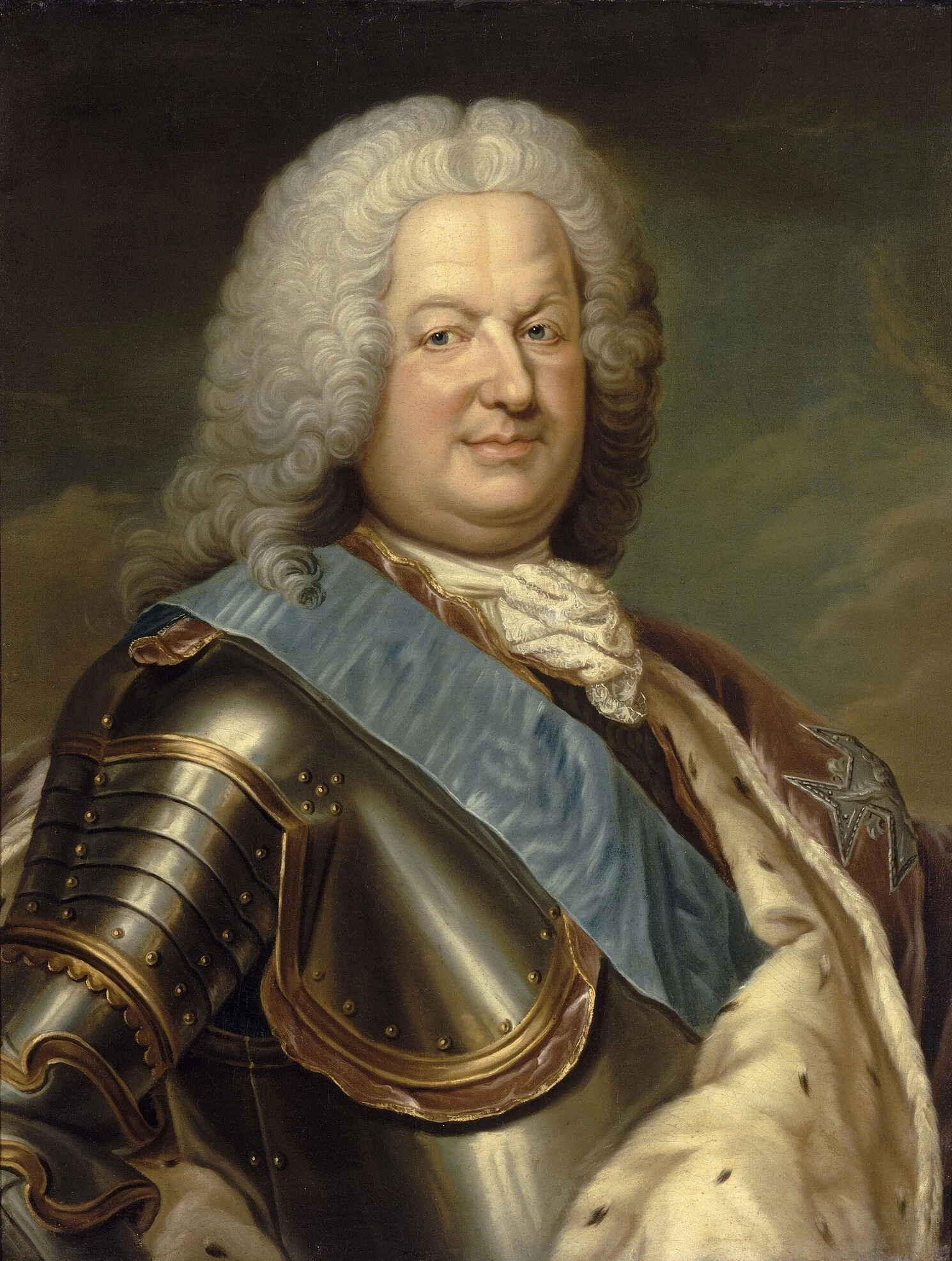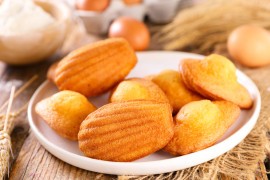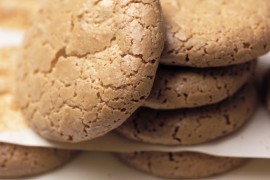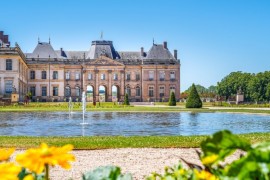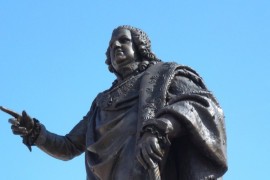Brief history of Baba-au-rhum
The invention of a gourmet king
The good king Stanislas : inventor of the Baba
The legend takes us to the castle of Lunéville in the 1730's, to the table of the "good King Stanislas", Stanislas Leszczynski, King of Poland and Duke of Lorraine. A huge gourmet. A fan of sweets, in particular, which played tricks on him since sugar spoils the teeth. So much so that, to tell the truth, the king has no more teeth. Which means he can't chew the brioche he loves so much. A kind of kouglopf that he had made like the Polish "babka", buns flavored with saffron, candied fruits and raisins. The greediness will give him a great idea:
Soften the brioche with wine
Not being able to chew, he can very well gobble, and the carafe of good wine which is in front of him will give him an ingenious idea: to sprinkle the bun with wine to make it softer and thus to be able to swallow it easily with an additional advantage: the taste of this good wine of Tokaj, which is made in Hungary and which the previous duke of Lorraine makes send once a year to Stanislas. A fabulous wine that reminds of a late harvest Alsace wine. So it was said, so it was done, and Stanislas continued to eat brioche sprinkled with wine...
An idea taken up in Paris
Excerpt from the "French Canamelist" culinary book by Joseph Gilliet, contemporary of Stanislas and Nicolas Störher.
This idea of the king, the descendant of his pastry cook will transform it and make the baba-au-rhum. Nicolas Störher had the idea in 1735 to replace the Tokaj wine by rum (cheaper since the French islands provide plenty of it). He adds a little whipped cream, one or two candied fruits and presents it to his customers in the rue Montorgueil in Paris. The success is immediate. And the baba settles on the bourgeois tables of the 19th century. An idea that the Italian gourmets could not miss by adding their touch: limoncello. This is how it is concocted in Italy where it is called "Neapolitan baba".
 Excerpt from "Le Canameliste Français" by Joseph Giliet, chef d'office of Stanislas (and who made babas for the king).
Excerpt from "Le Canameliste Français" by Joseph Giliet, chef d'office of Stanislas (and who made babas for the king).
Our recipe
Ingredients
- 3 eggs
- 150 grams of sugar
- 150 grams of flour
- 60 grams of butter
- 1 packet of baking powder
- Rum (and we leave it on the table!)
To make your own syrup :
- 250 grams of sugar
- A large glass of water (about 40 Cl)
- A glass of amber rum (15 cl).
Process
Manufacture of the dough
- Preheat your oven to 180°C (gas mark 6).
- Melt the butter (but do not cook it)
- Mix the 150 grams of sugar and the 3 whole eggs (with a mixer is better)
- Add the melted butter, sugar and baking powder
- Work the dough well, it must be smooth
- Let it rest for a while (you have an errand to run, right?)
- Pour the dough into a high mould (a Kouglhopf mould is best)
Make the syrup
- In a heavy-bottomed saucepan, bring water and sugar to a boil.
- Add the rum
- Don't leave it too long on the heat, about 3-4 minutes, it should simmer but not cook.
Cooking
- Bake the dough at 180°C (thermostat 6) for 15 minutes
- After 15 minutes, lower the temperature to 150°C (thermostat 5) for another 15 minutes
The service
- Turn out the dough into a large soup plate
- Pour syrup over it (keeping some in a container)
- You can put a little whipped cream on the baba, and some put candied fruits or fresh fruits.
- The tradition is to leave the bottle of rum close by so that the guests can have a drink.
Tips:
Work the dough for a long time, it will rise better. Also, let it rest for a while before baking.
It is not impossible that our translator made mistakes. We told him that even if the rum was available at will, we should not exaggerate...

